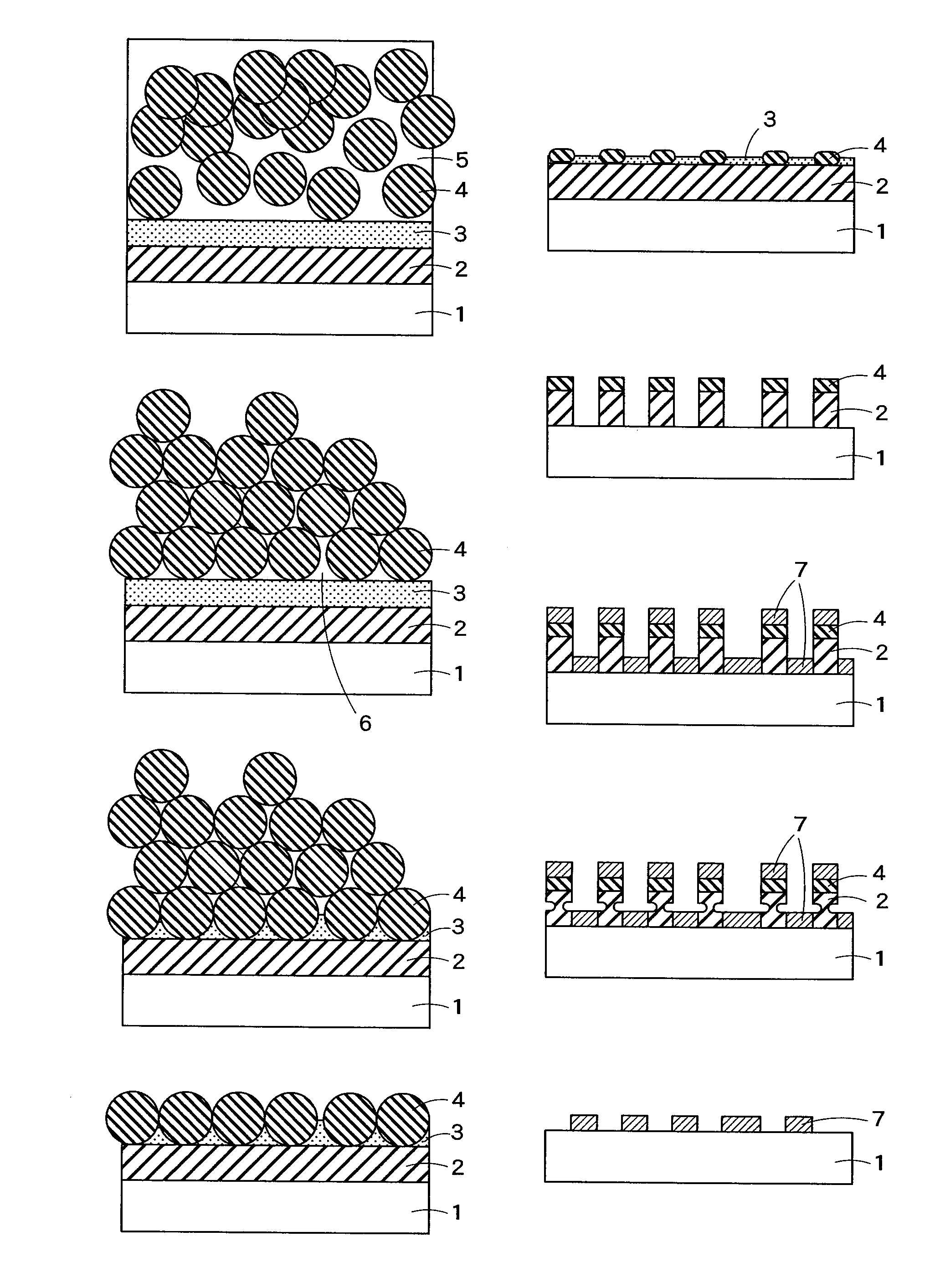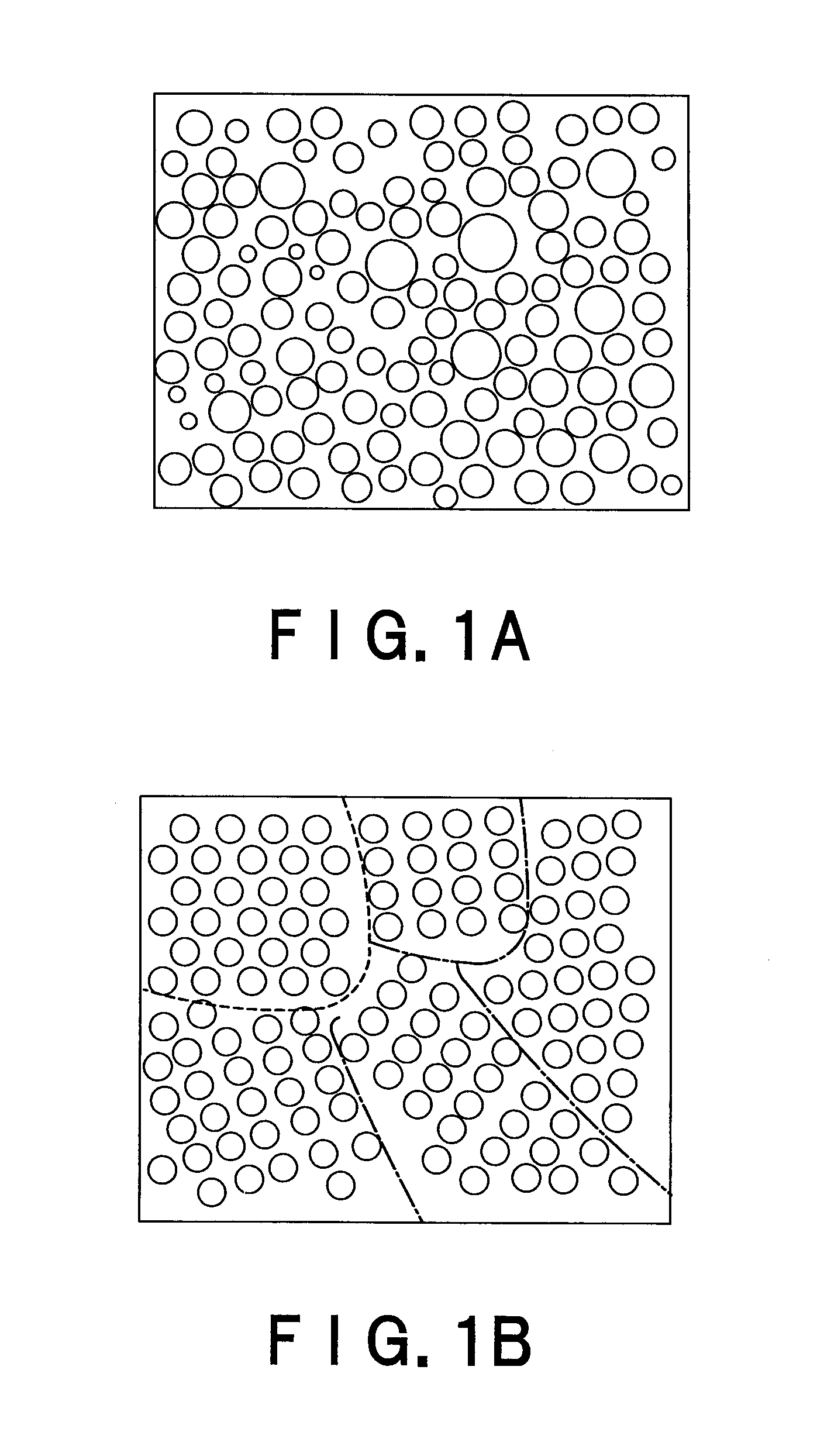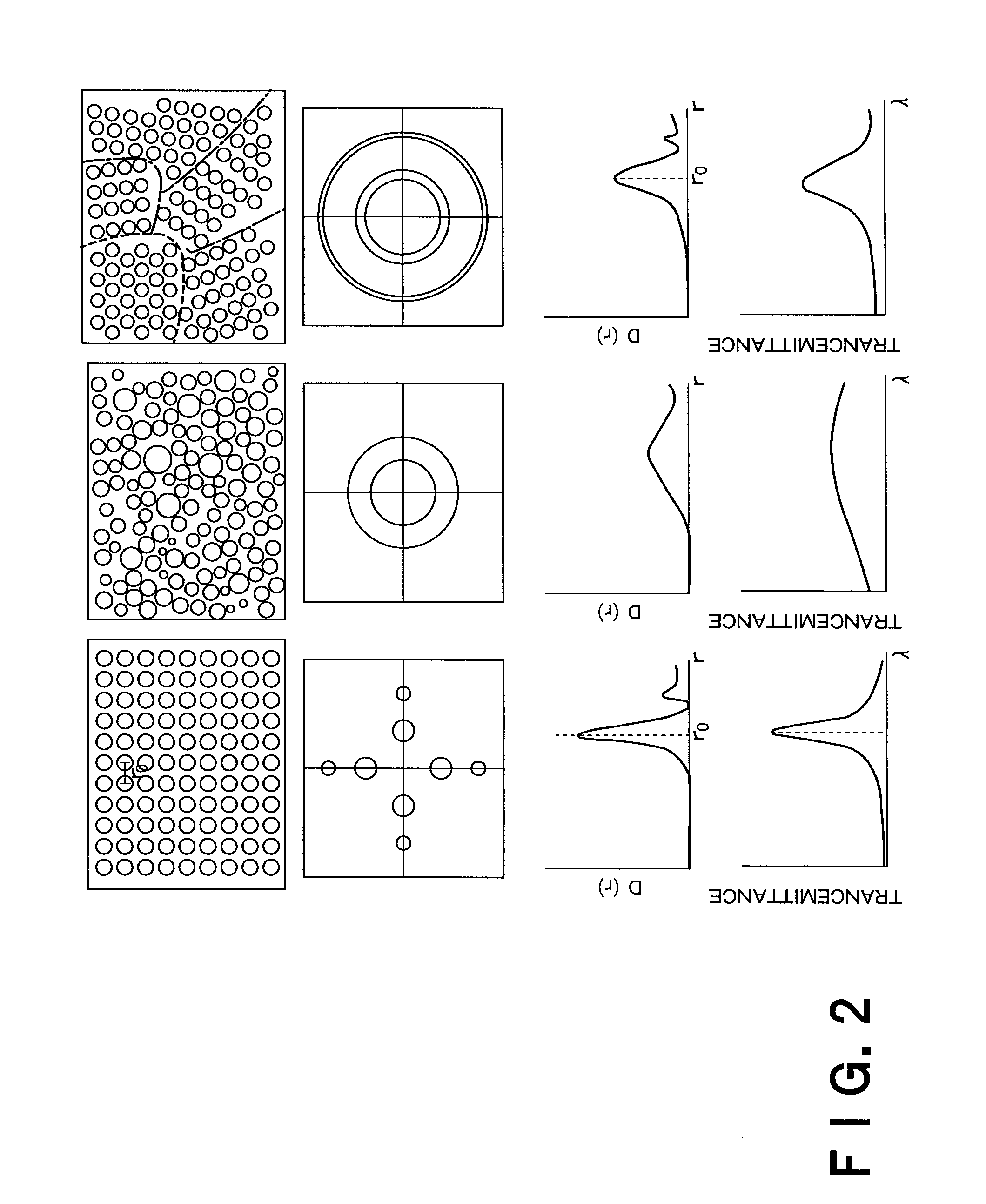Light-transmitting metal electrode and process for production thereof
- Summary
- Abstract
- Description
- Claims
- Application Information
AI Technical Summary
Benefits of technology
Problems solved by technology
Method used
Image
Examples
example 1
[0121]First, a visible light-transmitting metal electrode was produced.
[0122]The present inventors have found the conditions for preparing a fine silica-monoparticle layer in which plural microdomains having a period of 200 nm are formed. The pattern of the obtained monoparticle layer is transferred to a substrate in the manner described later. Thereafter, a metal electrode is formed by metal vapor-deposition onto the substrate having the transferred pattern, and then the metal deposited in the area of the transferred pattern is removed to produce a light-transmitting metal electrode. Concrete procedures are described below.
[0123]A thermosetting resist (THMR IP3250 [trademark], manufactured by Tokyo Ohka Kogyou Co., Ltd.) was diluted with ethyl lactate by 1:3. The solution was spin-coated at 1500 rpm for 30 seconds on a 4-inch amorphous quartz wafer (Photomask Substrate AQ [trademark], manufactured by Asahi Glass Co., Ltd.), and then heated on a hot-plate at 110° C. for 90 seconds, ...
example 2
[0131]Another visible light-transmitting metal electrode in which the area occupied by Al was reduced was produced. In this electrode, the ratio of the area occupied by the openings was increased to disturb the period and hence to weaken the wavelength dependence of transmitted light.
[0132]First, a thermosetting resist (THMR IP3250 [trademark], manufactured by Tokyo Ohka Kogyou Co., Ltd.) was diluted with ethyl lactate by 1:3. The solution was spin-coated at 1500 rpm for 30 seconds on a 4-inch amorphous quartz wafer (Photomask Substrate AQ [trademark], manufactured by Asahi Glass Co., Ltd.), and then heated on a hot-plate at 110° C. for 90 seconds, and further heated at 250° C. for 1 hour in an oxidation-free inert oven under nitrogen gas-atmosphere to perform a thermosetting reaction. The layer thus formed had a thickness of approx. 120 nm.
[0133]The thermosetting resist (THMR IP3250 [trademark], manufactured by Tokyo Ohka Kogyou Co., Ltd.) was again diluted with ethyl lactate by 1:...
example 3
[0138]This example describes a mass-production method utilizing nano-in-print technology. For the purpose of easy understanding, the method is explained with FIG. 8 referred to. However, in practical applications, minor conditions may be changed from those described below. In this method, the columnar pattern of fine silica particles is used as a mold to produce a Ni-made stamper for nano-in-print.
[0139]First, a thermosetting resist (THMR IP3250 [trademark], manufactured by Tokyo Ohka Kogyou Co., Ltd.) was diluted with ethyl lactate by 1:3. The solution was spin-coated at 1500 rpm for 30 seconds on a 6-inch silicon wafer 11, and then heated on a hot-plate at 110° C. for 90 seconds, and further heated at 250° C. for 1 hour in an oxidation-free inert oven under nitrogen gas-atmosphere to perform a thermosetting reaction. The layer 12 thus formed had a thickness of approx. 120 nm.
[0140]The thermosetting resist (THMR IP3250 [trademark], manufactured by Tokyo Ohka Kogyou Co., Ltd.) was a...
PUM
 Login to View More
Login to View More Abstract
Description
Claims
Application Information
 Login to View More
Login to View More - R&D
- Intellectual Property
- Life Sciences
- Materials
- Tech Scout
- Unparalleled Data Quality
- Higher Quality Content
- 60% Fewer Hallucinations
Browse by: Latest US Patents, China's latest patents, Technical Efficacy Thesaurus, Application Domain, Technology Topic, Popular Technical Reports.
© 2025 PatSnap. All rights reserved.Legal|Privacy policy|Modern Slavery Act Transparency Statement|Sitemap|About US| Contact US: help@patsnap.com



